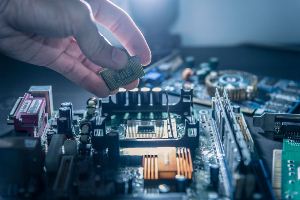Forecasts of the number of IoT devices that will be deployed in the foreseeable future indicate healthy growth, but there are very wide variations and the “experts” employ different timeframes. For example: 18 billion by 2022; 26 billion by 2020; 75 billion by 2025 and 125 billion by 2030. And once upon a time Ericsson and Cisco were forecasting 50 billion connected devices by 2020. The latter stat was probably responsible for the sky-high expectations for IoT’s potential, says Bob Emmerson.
The current round of forecasts should really be seen as general agreement on the future direction of IoT, which is very positive. Moreover these projections will change over time and different experts define the IoT in different ways. However, if a business needs to base critical IoT related investment decisions now then these forecasts can skew business plans by tens of billions in either direction. And that is the dilemma that chipsets manufacturers are currently facing.
Time is running out according to Ville Ylläsjärvi, who is chief marketing officer and member of the Board of Haltian Oy. Haltian is a Finnish company based in Oulu, which is 150km south of the Arctic Circle. They are very active in the IoT space, working on mesh network installations for various industries as well as the development of cellular IoT devices.
Ville highlights the fact that market research company IHS Markit’s forecast of more than 75 billion smart devices in use by 2025 represents a 400% increase over the roughly 15 billion devices in use today. Therefore manufacturers must build microchips at a rate six times greater than has ever been produced since Texas Instruments first developed them in 1958.
Currently chip manufacturers simply do not have the capacity to meet tomorrow’s IoT demands. Unless they start ramping up their investments now, the full potential of the IoT business is unlikely to be realised by 2025 or any year close to it. However, aside from capacity issues, there is another issue. Which connectivity technology should the chipset employ? Will the market end up favouring LTE-M or NB-IoT?
Altair Semiconductor believes most Western countries as well as the larger markets will eventually employ both technologies, the choice being determined by the application. Moreover dual mode modules that support both NB-IoT and LTE-M are being marketed. For example, Murata, a manufacturer of electronics components and solutions, has announced that it will employ Altair’s dual-mode CAT-M1/NB1 chipset.
LTE-M or NB-IoT: What’s the difference?
LTE (aka 4G) is distinguished from earlier networks by a combination of efficiency and flexibility. Efficiency comes from a simplified, flat, all-IP architecture. Flexibility is realised by a digital modulation technology that allows bandwidth to be assigned in a very flexible way and this allows network operators to market a wide range of services, which include very low-bit rate services for use in IoT solutions, i.e. NB-IoT and LTE-M.
Unfortunately the cellular communications industry tends to overwhelm the market with cryptic acronyms and esoteric technical definitions, so let’s cut to the chase and try to summarise the difference between these services.
LTE-M is the response of the technical body that standardises cellular communications for Low Power Wide Area Networks that employ spread spectrum technology, which is free. It’s an attractive option for device manufacturers looking to deploy on current cellular networks and it serves a broad set of use cases.
NB-IoT has a similar goal to Cat-M but uses a different technology (DSSS modulation vs. LTE radios). Both LTE-M and NB-IoT are part of the 5G specification. NB-IoT (Cat NB1) is very flexible: it can operate in 2G, 3G and 4G bands. It does have a higher upfront deployment cost, but it is being marketed as a less expensive option as it eliminates the need for a gateway. There will be dual mode modules in the future that support both NB-IoT and LTE-M.
Other factors that indicate NB-IoT becoming the best IoT connectivity option include a design that provides low power, cost-effective, wide area network performance having data rates measured in a couple of hundreds of kbps, which is more than adequate for most IoT applications where the transfer of large amounts of data is not necessary. Another is the recent announcement of 1NCE’s flat rate service offer of 500MB for every device over ten years for a mere €10.
Regional preferences
In North America, both Verizon and AT&T will probably use LTE-M as both companies have poured billions into their LTE networks. Initially they had little interest in something that is not LTE-based, although Verizon has announced support for NB-IoT. In addition AT&T is jumping on the NB-IoT bandwagon. The company will launch the technology in the U.S. in early 2019 and then expand it to Mexico by year-end.

Outside the US and countries with larger GSM deployments and less LTE, NB-IoT looks set to become the preferred technology. China has been embracing NB-IoT technology since its announcement and there is a strong government initiative. The target is to reach over 600 million connections by 2020. However there are signs that China will deploy Cat-M, starting with China Telecom.
Who are the NB IoT-Chipset Players?
Altair Semiconductor, Huawei, Intel, Qualcomm, Samsung, Sierra Wireless and U-Blox are among the many players marketing chipsets for the NB-IoT market. Nick Hunn, CTO at WiFore Consulting, indicates that thirteen different companies are bringing chips to market and that represents an upfront investment of around $200 million (€171.72 million). Add the costs of the standardisation process, infrastructure development and initial market trials and the figure rises to somewhere between $500 million (€429.30 million) and $1 billion (€0.86 billion).
That money has been spent getting NB-IoT to the point where it is today. That level of investment should be worrying competing standards like LoRa and SigFox as the NB-IoT companies will do all they can to recoup their investment. However, when it comes to real NB-IoT deployments it’s early days.
The author of this blog is Bob Emmerson, freelance writer and telecoms industry observer
Comment on this article below or via Twitter: @IoTNow_OR @jcIoTnow










